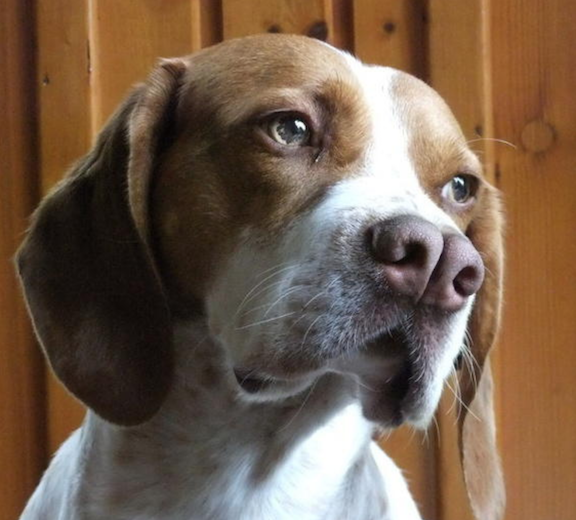
Poor Frank Burns. Being the ranking surgeon and second-in-command at the fictitious 4077th MASH unit in Korea earned him no respect, in large part because he was self righteous, hypocritical, and a second-rate surgeon with delusions of grandeur. When his character, nicknamed “Ferret Face” left the TV series, MASH, another character, B.J. remarked, “this reduces the enemy to just North Korea.”
As it happens, the moniker, “Ferret Face” was suggested by the actor playing him, Larry Linville. By all accounts, Linville was a consummate professional and a thoroughly good sport because “Ferret Face” was Linville’s own nickname as an unfortunate boy. Poor Larry Linville.
“Fork nose,” on the other hand, is the actual name of a breed, the literal translation of its Turkish name, Catalburun: “Catal (pronounced chatal) meaning “fork,” and “burun” meaning “nose.” Also known as the Turkish Pointer, the Catalburun shares an unusual trait with the Pachón Navarro and Andean Tiger-hound, namely, a split nose, or what is medically called a “bifid nose.” American journalist, Freeman Lloyd, described the nose as looking like the wrong end of a double barreled shotgun.
The nose isn’t actually double, but appears as such because the left and right nostrils are separated from each other by a deep cleft. In some cases, the groove is so deep that each nostril appears to have its own “root.” Interestingly, the bifid nosed dogs don’t have a higher incidence of producing, nor of themselves having cleft palates.
The Catalburun originated in Mersin in the southern Tarsus province in Turkey, but before that, it’s history is murky. Some believe the dogs descended from European pointers and hounds brought in by Turkish nobility; others think there could be Greek pointers in the ancestry since Greeks inhabited the Tarsus region for centuries until about 1922. The most accepted theory is that a small number of Pachón Navarro came over from Spain to Turkey back in the 18th century when both Spain and Talus where under the rule of Abbasid-Umayyad. The dogs became established in the villages around the Talus region, and over time formed a separate breed. The agility and hunting style of the two are very similar which some believe is proof of a close relationship between the two breeds. Whatever its origin, the Turkish Pointer is a consummate hunting dog, though contrary to claims by some breed enthusiasts, scientific data doesn’t support the notion that the dogs have superior scenting ability to other breeds.
The Catalburun is not recognized as an official breed and there is no official breed standard, but fanciers of the breed are working towards getting the breed officially recognized. Outside of the country, the Catalburun is virtually unheard of. With estimates of some 1.3 million dogs in all of Turkey, researchers believe that the population of the Turkish Pointer is only 200, or about 0.015% of the entire country’s canine population, and that makes it one of the rarest breeds of dogs in the world.
Inside the country, the breed is not only a hunting dog, but is used as a sniffer dog for narcotics, explosives, and people, both deceased and alive. The on-line news source, tekdeeps.com, reported that there is also a Turkish Vizsla Reproduction and Rehabilitation Center that studies the ancestry, genetics and characteristics of the breed, and cooperates with various institutions and the people who live in the villages of the Tarsus Mountains and belong to the local hunting club.
Image found on Pinterest and happily credited upon receipt of information

here can i find in? we live in canal winchester ohio. currently have a 3 yr old fmale yorkie
Not sure what you’re asking, Dale. Are you asking where you can find a Catalburun? As the post said, they are exceedingly rare dogs outside their home country. Perhaps a Google search may be helpful.